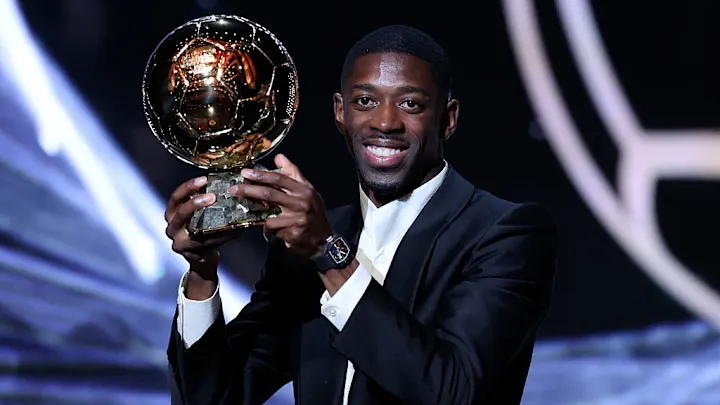For years, the story of Ousmane Dembélé was one of brilliance constantly interrupted. His pace, dribbling, and vision were undeniable, yet his career was repeatedly derailed by injuries.
Between 2017 and 2021, he missed over 100 matches due to recurring hamstring and muscle problems. At one point, critics wondered aloud whether his body would ever allow him to deliver on the promise that made Barcelona spend over €100 million to sign him.
Fast forward to 2025: Dembélé has just been crowned Ballon d’Or winner, the ultimate recognition for football’s best player. The turnaround was not only athletic, it was technological.
Behind the winger’s resurgence lies a story of science, data, and innovation, reshaping how football nurtures fragile talents.
What You Should Know
On Monday night, Dembele was named the winner of the men’s 2025 Ballon d’Or, after he enjoyed a spectacular season winning an unprecedented treble of the Champions League, Ligue 1 and Coupe de France.
“What I have just experienced is exceptional, I have no words for it,” said an emotional Dembele. “I feel a bit of stress, it’s not easy to win this trophy. To my family, we have experienced so much together. We have been through it all. We will always be together.”
By winning the 2025 Ballon d’Or, Dembélé became one of ten players to have won the FIFA World Cup, UEFA Champions League, and the Ballon d’Or in their career.
Sports Science at the Core of Reinvention
The Ousmane Dembélé we see today is a product of data-driven injury prevention. Clubs now use GPS trackers, AI-powered wearables, and predictive analytics to monitor fatigue, muscle load, and stress.
These aren’t gimmicks, they’re part of a global sports technology market valued at over $26 billion in 2024, projected to grow beyond $60 billion by 2030. Wearables alone account for roughly a third of this growth, generating $1.8 billion in revenue in 2024 and expected to more than double by 2030.
For elite athletes like Dembélé, this means every sprint, tackle, and recovery session is quantified. Machine learning models flag risks before they become ruptures, and training intensity is adjusted in real time.
In fact, studies show that clubs applying GPS-based training data have achieved measurable outcomes, like a 12% reduction in hamstring injuries among athletes using predictive monitoring frameworks. For a player once defined by fragile hamstrings, such interventions were transformative.
The Role of Recovery Science
Beyond injury forecasting, recovery technology has become central to elite football. Clubs like PSG and Barcelona have invested heavily in cryotherapy chambers, hyperbaric oxygen therapy, and localized cold treatments to accelerate recovery windows.
Motion sensors and AI-assisted video analysis further guide rehabilitation, ensuring players don’t just return quickly, but return stronger.
For Dembélé, these interventions shortened the downtime between knocks, preventing small issues from escalating into long absences. What once required months of rest can now be managed within weeks, thanks to precise medical insights.
A Mindset Augmented by Technology
Of course, technology alone doesn’t win a Ballon d’Or. The French winger has matured mentally, showing discipline in diet, recovery, and tactical awareness. Yet, these human improvements have been amplified by tools that make consistency possible.
As experts often note, AI can measure, but it cannot motivate. Dembélé’s reinvention demonstrates a fusion of human will and technological infrastructure. Without one, the other is incomplete.
What This Means
Dembélé’s Ballon d’Or win is a case study in how modern football is changing. From wearables to big-data analytics, from medical innovation to AI-driven coaching, the sport is embracing technology at unprecedented scale.
According to experts, if Messi and Ronaldo embodied the age of relentless repetition, Dembélé’s Ballon d’Or may mark the age of data-augmented resilience, where fragile talents are rebuilt through science.
And the message goes beyond football. As Ridwan Adelaja, media aide to Nigeria’s Minister of Interior, and a key voice in the African tech ecosystem put it, Dembele’s win is an inspiration.
“To all African tech developers out there, let Dembele’s story of determination and perseverance motivate you, especially if you are just starting out,” Adelaja said on LinkedIn.
Ousmane Dembélé’s journey from injury-ridden player to Ballon d’Or winner underscores a truth: the future of football is inseparable from technology. Wearables, analytics, and recovery science don’t replace talent, but they ensure it survives long enough to flourish.
Analysts say his reinvention is a blueprint. As more clubs and athletes embrace technology, we may see fewer careers cut short and more players reach their full potential. In that sense, Dembélé’s Ballon d’Or is not just a personal triumph, but a symbol of a sport and a generation being remade by science.
Talking Points
It is remarkable that Ousmane Dembélé, once labeled injury-prone, has leveraged cutting-edge sports science and technology to transform his career trajectory.
This shift highlights how wearables, AI-driven analytics, and recovery innovations are no longer optional add-ons, but essential tools that define modern elite performance.
At Techparley, we see Dembélé’s Ballon d’Or not just as a personal milestone but as proof of how data and science can extend fragile careers and unlock untapped potential in global football.
The integration of GPS tracking, predictive algorithms, and advanced recovery protocols creates a feedback loop where small injuries are managed before they become career-threatening, ensuring consistency on the pitch.
As football scales its use of technology, partnerships between clubs, health-tech companies, and sports federations could accelerate the deployment of these tools, making them part of the wider ecosystem.





